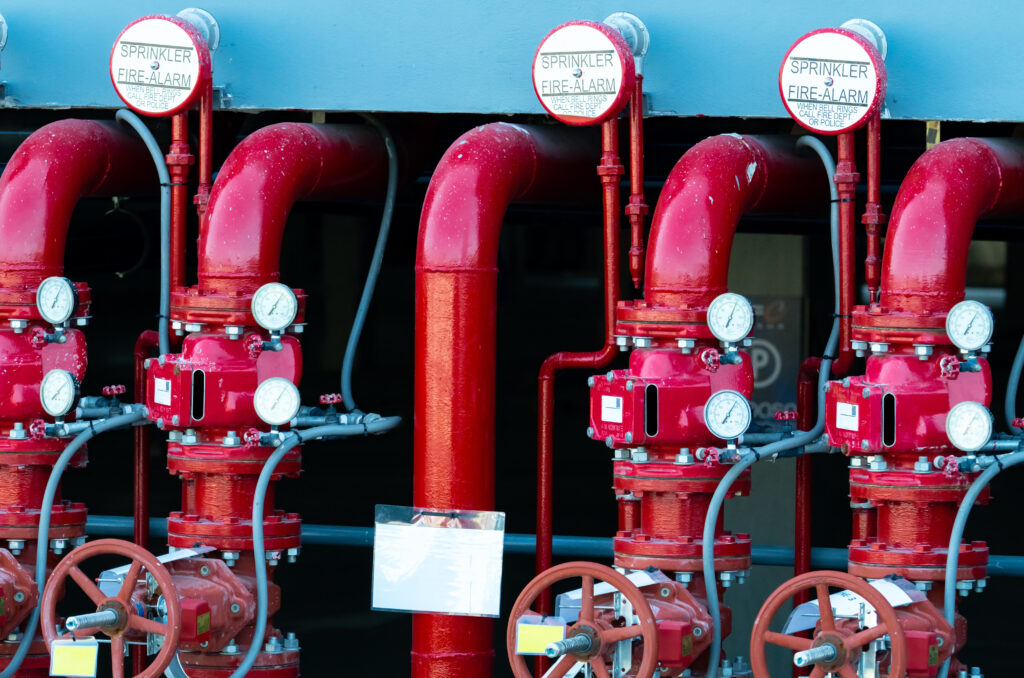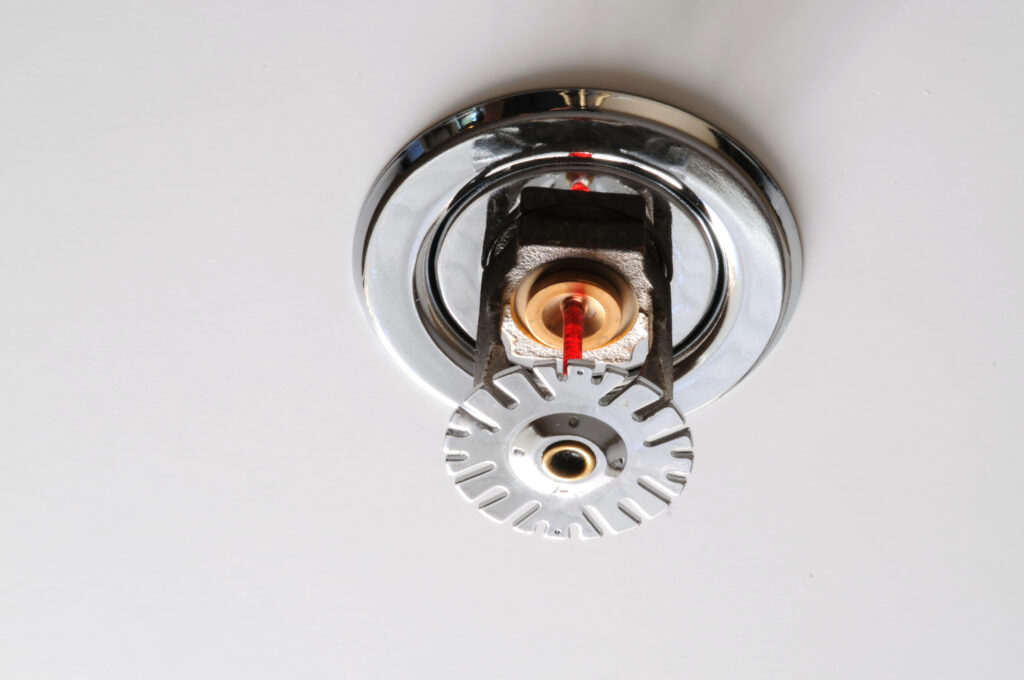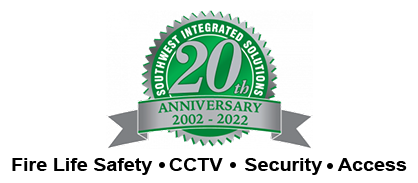What Is a Fire Suppression System
Any fire protection infrastructure must have a fire suppression system. The word “fire suppression” refers to any engineering set of components designed to extinguish a fire. Putting out the fire can be done with an extinguishing agent such as water, foam, or chemical compounds. This article explains the purpose and functions of a fire suppression system, supporting site teams and building owners in establishing a fire prevention strategy that is both reliable and compliant.

What Is a Fire Suppression System
When extinguishing a fire, there is always one component of a fire suppression intends for this purpose through outer material. Many fire suppression systems additionally include fire detection systems and signaling mechanisms that notify personnel of the situation and compel responsible parties to take additional suppression measures. When a fire is detected, the extinguishing component of the system is usually activated automatically; however, specific fire suppression systems require manual activation.
The potential threats caused by fire and the procedures required to extinguish it differ substantially depending on the source of the fire and other hazards present in the workplace. For example, the dangers posed by fire in a location with explosion hazards or in a position where a worker’s ability to leave is limited necessitate more extensive and specialized suppression systems. That answers the question, what is a fire suppression system?
Because of the extensive range of different types of fires that might develop and the equally wide range of responses required to put them out, various fire suppression standards vary depending on the specific hazards present in a given workplace.
Sprinkler Systems/Water-based Fire Suppression Systems
They are popular because they pose no risk to human health and employ a readily available resource. Wet agents may not be appropriate if a liquid causes the fire because of their lack of efficacy and the risk of spreading the flames by splashing. Frequently employed in this situation are dry agents.
The systems are well-suited to fulfill the demands of today’s busy catering establishments. Auto-ignition is a significant feature of grease fires. It is not a problem to store cooking grease at room temperature. Its vapors, for instance, are difficult to ignite.
However, when heated to an autoignition temperature, simply putting out the fire and removing the heat source may not be enough to prevent re-ignition. The liquid needs to be cooled below the minimum ignition temperature to prevent it from reigniting.
Dry Chemical Systems
They spray a dry chemical powder into a defined area to stop the spread of fire. The most common powders used in dry chemical suppression systems are sodium bicarbonate and mono-ammonium phosphate. Most commonly used for Class B and some Class C fires is sodium bicarbonate. ABC flames require mono ammonium phosphate. A tank is loaded with dry powder and compressed in a dry chemical suppression system. A high-pressure nitrogen cartridge will discharge and open the pressure tank valve with the dry powder when the system is operating. The chemical agent has then released out the nozzles of the suppression system and putting out the fire as a result.
It is necessary to recharge the dry chemical system every after usage. Dry chemistry systems aren’t new, but they’re incredibly dependable. When activated, a dry chem system, such as an ABC fire extinguisher with dry powder, will release a lot of powder over the hazard, necessitating substantial cleanup after each use.
Because they are rechargeable electrical extinguishing systems easily deployed into commercial and industrial settings, dry chem systems give convenient accessibility and operate efficiently. Traditional combustible materials and flammable liquid fires involving live electrical equipment because they are non-conductive, a dry chemical system is used.
Dry chemical suppression systems are a fantastic option for a fire sprinkler system that is unavailable or preferred. Auto paint booths, dip tanks, mixing rooms, and open-faced booths are typical applications for these systems.
To prevent a fire from spreading, a “complete flooding system” that saturates an impacted room with suppressant requires in instances when the source of the fire is exceedingly difficult to extinguish or is challenging to reach, such as the interior of an electrical system. Whole flooding systems can cause substantial injury to humans if there are no correct safety precautions implemented.
How Does it Work?
Built-in components of a fire suppression system will identify fires as soon as possible. The presence of flames and smoke detects initially by these components. The suppression system will then sound an alarm, preventing the spread of fire.

Fire Suppression System Types
In standard practice, there are five different types of fire suppression systems, each with its set advantages and disadvantages depending on the sort of space that needs to be protected:
Water Mist Systems
Exposing a location to a vast amount of water is sometimes not the best approach; thus, using a water mist system to control the water. These systems work by producing far smaller droplets than traditional sprinkler systems. It creates a layer of steam that deprives fires of oxygen, quickly lowering the affected area’s temperature. A more sustainable fire suppression device that consumes far less water than ordinary sprinklers is the best choice. In our article on new fire protection and suppression technologies, we go over water mist systems in further depth.
Kitchen Chemical Foam Systems
There are chemical foam devices built exclusively for putting out kitchen fires. These devices function by rapidly ejecting a water-based chemical foam agent into a limited, localized area. Controlled by a manual switch or a heat link (a link attached to a wire that breaks when exposed to heat, triggering the foam release valve), and are commonly install beneath cookers’ canopies.
Gas Systems
Firefighting liquids stored in gas systems and pressurizes with nitrogen. These liquids include a chemical agent (FM200), which releases swiftly to put out fires. These systems are beneficial for areas with a lot of electrical equipment, such as switchboards or server rooms, because they don’t consume any water. The gas is first condensed into a liquid and stored in small cylinders, making these devices portable, easy to store.
Pneumatic Heat Detection Tubes
The design of pneumatic head detection tubes is remarkably similar to that of fire extinguishers. They are the most compact and movable fire suppression system available. A pipe and a valve are the two main components of these tubes. Commonly situated around a potential fire source, the valve releases a suppressive substance directly onto the flames when it reaches a specified temperature.
Pneumatic heat-detecting tubes fight flames in their early stages in compact spaces with limited maneuverability. As a result, they’re great for putting out fires in cabinets, cupboards, boats, and cars. However, because they are ineffective for putting out massive fires, they do not suggest for use in rooms or locations with high ceilings.
Foam Deluge Systems
The most challenging aspect of firefighting is adequately securing spaces that contain flammable substances. Foam deluge systems are the most effective way to stop these conditions from spreading and you can frequently see in refineries, airplane hangars, and industrial warehouses. In these types of situations, a fire can spread quite quickly. Foam deluge systems are speedily and widely applied suppression materials.
Foam deluge systems use a foam-water mixture to swiftly control burning flammable liquids while also cooling the surrounding environment. The foam’s composition creates a thick blanket that deprives fires of oxygen and prevents the production of combustible gases, thus suffocating the fire. In this way, they’re similar to traditional fire extinguishers.
Engineered vs. pre-engineered fire suppression systems are also topics worth debating. Engineered fire suppression systems will ensure to protect an entire room. For example, Firetrace employs clean compounds that are safe for electronics and maybe inhaled without causing harm.
Pre-engineered systems protects small compartments or micro-environments. Engine compartments and electrical panels are two examples of places where these technologies would be helpful. A pre-engineered system applies to put out fires in CNC and EDM equipment.
Fire Trace Pre-engineered Fire Suppression System

There are two types of Fire trace pre-engineered fire suppression systems: indirect release and immediate release. Learn about the two different Fire trace pre-engineered fire suppression systems in the video below:
Agents for Fire Suppression
Pre-engineered fire suppression systems can employ various agents to help minimize the spread of a fire within the space. Class K systems often feature foam fire suppressants or other wet chemical agent choices. On the other hand, Engines with ABC Dry Chemical powder, which can suppress Class A, B, and C fires, usually covers.
Options for Detection
There are two types or categories of pre-engineered systems. An active detecting system is the first, while a non-electric detection method is the second. Active detection necessitates a continuous search for heat or smoke, which requires an electrical power supply. There is no electricity in a non-electric detecting system.
Pneumatic Detection Tubing
The non-electric detection systems is added within and throughout risks, such as the Fire trace pre-engineered system. Because heat rises, the pneumatic detecting tube triggers. The pipe will burst open at the point of contact if it comes into contact with heat or fire. It produces a pressure change throughout the system, signaling the system to discharge fire suppression agents. Agents with these systems uses carbon dioxide, dry chemicals, clean agents, and foam suppressants.
Costs in the Industry
With fire suppression systems, there are numerous costs to consider, and prices can vary greatly. The most evident is the expense of the actual equipment, which includes the suppression agents. But most of the time, we frequently overlook the cost of installation. When you buy a system, you must also have it installed, which might increase the price. You might want to compare the cost of an automatic fire suppression system to the cost of something more straightforward, such as a fire extinguisher system, which may be able to accomplish the job just as effectively.
Even if a fire extinguisher costs less than $20 in a retail store, the disadvantage of a fire extinguisher is that it requires a person to sit there, detect the flammable, explosive element, and then extinguish it under high pressure. It would be best to examine the cost to human safety and peace of mind in this circumstance. You don’t have to be concerned if your manufacturing plant is operational overnight while no one is present because of a fire suppression system. The system automatically handles it.
For all types of structures, automatic fire protection systems are a common alternative. They are preventive measures in the event of a hazard, detecting and extinguishing flames as soon as they start. Without human assistance, the work they provide can mean the difference between a bit of fire and a major one.
What are the Fire Suppression System Requirements?
Although it is not legally requires to install a fire suppression system in some countries, the responsibility falls to the property owners for conducting fire risk assessments, whether commercial or residential. Whether undertaken internally or externally, this assessment may identify the requirement for a fire suppression system.
When choosing the best fire suppression system for your requirements, it’s crucial to understand how active and passive fire protection systems operate together to put out flames. Critical for risk management, as it reduces the chance of structural damage while also ensuring the safety of the building’s occupants.
In a nutshell, a fire suppression system does what it says on the tin: it suppresses and extinguishes a fire within a structure.
It’s important to note that when asked what a fire suppression system is, the answer is; they are not the same as fire sprinkler systems. For a sprinkler system to extinguish or suppress a fire, fire sprinklers always require a large volume of water. The Sprinkler will cause water damage to the contents of the room, but it will save lives and the structure.
On the other hand, fire suppression systems employ a variety of suppressing substances in addition to water. CO2, chemicals, and inert gases are examples of stopping agents. These agents have unique features that make them excellent for safeguarding critical equipment and contents within a structure while suppressing a fire, as detailed in detail below.
So to summarize if what is a fire suppression system? The design of the fire suppression system is to intervene before a fire has a chance to grow and spread, decreasing the potential for damage. Fire Suppression means that, unlike fire sprinklers, these devices typically trigger far earlier in the fire’s growth.

